CONDURITOL B EPOXIDE
Synonym(s):1,2-Anhydro-myo-inositol;CBE, 1,2-Anhydro-myo-inositol;Conduritol B Epoxide - CAS 6090-95-5 - Calbiochem
- CAS NO.:6090-95-5
- Empirical Formula: C6H10O5
- Molecular Weight: 162.14
- MDL number: MFCD00077326
- SAFETY DATA SHEET (SDS)
- Update Date: 2024-11-19 23:02:33

What is CONDURITOL B EPOXIDE?
Description
Conduritol B epoxide (6090-95-5) is a β-Glycosidase inhibitor.1,2 May be used for generation of the “Gaucher mouse”3 and the in vitro model of the Gaucher cell4.
Chemical properties
White Crystalline Solid
The Uses of CONDURITOL B EPOXIDE
Conduritol B Epoxide acts on b-glucosidases from widely differing sources to show a loss of enzymic activity: from various Aspergillus species, yeast, snail, sweet almonds, and mammals. The other enzymes that have been found to be covalently inhibited are a- glucosidase from yeast and the sucrase-isomaltase complex from rabbit small intestine.
The Uses of CONDURITOL B EPOXIDE
inhibitor of glucosidases
What are the applications of Application
Conduritol B Epoxide (CBE) is a specific covalent β-glycosidase enzyme inhibitor that results in the accumulation of glucocerebroside.
Definition
ChEBI: 1-D-1,2-anhydro-myo-inositol is a conduritol epoxide resulting from the formal epoxidation of the double bond of (+)-conduritol B. It has a role as an EC 3.2.1.48 (sucrose alpha-glucosidase) inhibitor and an EC 3.2.1.10 (oligo-1,6-glucosidase) inhibitor. It is functionally related to a (+)-conduritol B. It is an enantiomer of a 1-L-1,2-anhydro-myo-inositol.
General Description
Conduritol B epoxide?(CBE) is a mix of 1-L-1,2-anhydro-myo-inositol and 1-D-1,2-anhydro-myo-inositol.
Biochem/physiol Actions
Conduritol B epoxide?(CBE)?is capable of inactivating sucrase-isomaltase irreversibly. It can be used to produce cell and animal models to study on Gaucher disease (GD) and Parkinson′s disease (PD).
storage
Store at -20°C
References
1) Datta and Radin (1988), Normalization of liver glucosylceramide levels in the “Gaucher” mouse by phosphatidylserine injection;? Biochem. Biophys. Res. Commun., 152 155 2) Radin and Vunnam (1981), Inhibitors of cerebroside metabolism;? Methods Enzymol., 72 673 3) Stephens et al. (1981), Distribution of conduritol B epoxide in the animal model for gaucher’s disease (Gaucher mouse); Biochim. Biophys. Acta, 672 29 4) Newburg et al. (1986), beta-Glucosidase inhibition in murine peritoneal macrophages by conduritol-B-epoxide: an in vitro model of the Gaucher cell;? Biochim. Biophys. Acta, 877 121
Properties of CONDURITOL B EPOXIDE
| Melting point: | 157-159 |
| Boiling point: | 360.5±42.0 °C(Predicted) |
| Density | 1.925±0.06 g/cm3 (20 ºC 760 Torr) |
| storage temp. | 2-8°C |
| solubility | Soluble in Water (up to 25 mg/ml) or in DMSO |
| pka | 13.08±0.70(Predicted) |
| form | White solid |
| color | White |
| Stability: | Moisture Sensitive |
Safety information for CONDURITOL B EPOXIDE
| Signal word | Warning |
| Pictogram(s) |
 Exclamation Mark Irritant GHS07 |
| GHS Hazard Statements |
H315:Skin corrosion/irritation H319:Serious eye damage/eye irritation H335:Specific target organ toxicity, single exposure;Respiratory tract irritation |
| Precautionary Statement Codes |
P261:Avoid breathing dust/fume/gas/mist/vapours/spray. P271:Use only outdoors or in a well-ventilated area. P280:Wear protective gloves/protective clothing/eye protection/face protection. |
Computed Descriptors for CONDURITOL B EPOXIDE
Abamectin manufacturer
New Products
4-AMINO-TETRAHYDRO-PYRAN-4-CARBOXYLIC ACID HCL 4-(Dimethylamino)tetrahydro-2H-pyran-4-carbonitrile 4-Aminotetrahydropyran-4-carbonitrile Hydrochloride (R)-3-Aminobutanenitrile Hydrochloride 3-((Dimethylamino)methyl)-5-methylhexan-2-one oxalate 1,4-Dioxa-8-azaspiro[4.5]decane 5-Bromo-2-nitropyridine Nimesulide BP Aceclofenac IP/BP/EP Diclofenac Sodium IP/BP/EP/USP Mefenamic Acid IP/BP/EP/USP Ornidazole IP Diclofenac Potassium THOMAIND PAPER PH 2.0 TO 4.5 1 BOX BUFFER CAPSULE PH 9.2 - 10 CAP SODIUM CHLORIDE 0.1N CVS ALLOXAN MONOHYDRATE 98% PLATINUM 0.5% ON 3 MM ALUMINA PELLETS (TYPE 73) LITHIUM AAS SOLUTION 2-Bromo-1-(bromomethyl)-3-chloro-5-nitrobenzene 2-Bromo-3-nitroaniline N-(3-Hydroxypropyl)-N-methylacetamide 3-Bromo-6-chloropyridazine 4-ethyl-3-nitrobenzoic acidRelated products of tetrahydrofuran
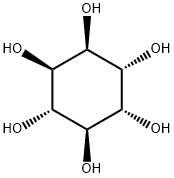
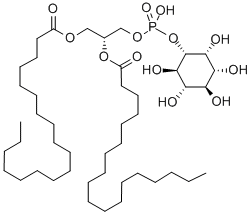

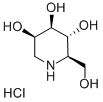
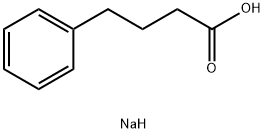
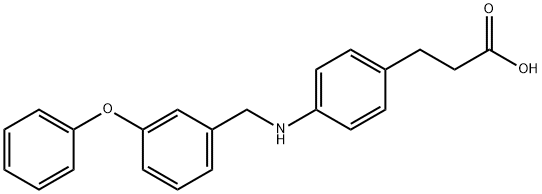

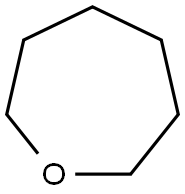
You may like
-
 Conduritol B epoxide CAS 6090-95-5View Details
Conduritol B epoxide CAS 6090-95-5View Details
6090-95-5 -
 1-Methyl-6-oxo-1,6-dihydropyridazine-3-carbonitrile 98%View Details
1-Methyl-6-oxo-1,6-dihydropyridazine-3-carbonitrile 98%View Details
99903-60-3 -
 1823368-42-8 98%View Details
1823368-42-8 98%View Details
1823368-42-8 -
 2-(3-(tert-butyl)phenoxy)-2-methylpropanoic acid 1307449-08-6 98%View Details
2-(3-(tert-butyl)phenoxy)-2-methylpropanoic acid 1307449-08-6 98%View Details
1307449-08-6 -
 Ethyl 3-(furan-2-yl)-3-hydroxypropanoate 25408-95-1 98%View Details
Ethyl 3-(furan-2-yl)-3-hydroxypropanoate 25408-95-1 98%View Details
25408-95-1 -
 2-Chloro-5-fluoro-1-methoxy-3-methylbenzene 98%View Details
2-Chloro-5-fluoro-1-methoxy-3-methylbenzene 98%View Details
1805639-70-6 -
 1784294-80-9 98%View Details
1784294-80-9 98%View Details
1784294-80-9 -
 Lithium ClavulanateView Details
Lithium ClavulanateView Details
61177-44-4